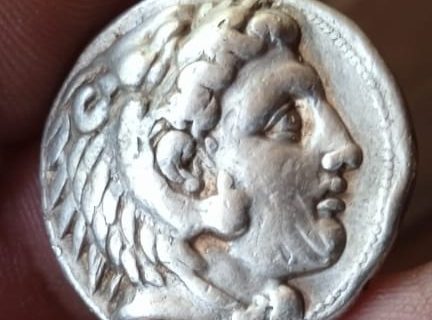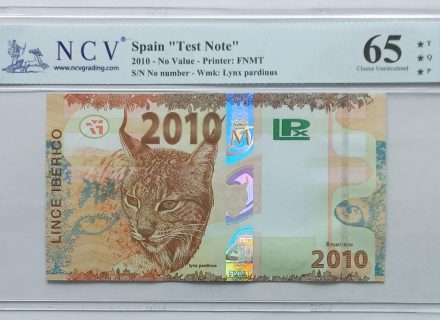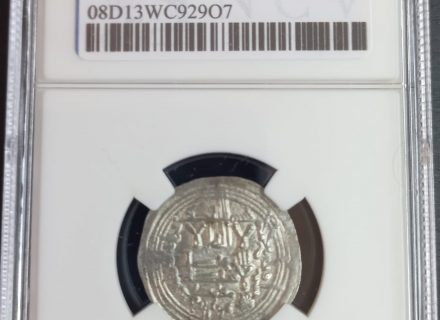We chatted with 5 experienced banknote collectors about their beginnings, the present and future of collecting or what mistakes they wouldn’t repeat. Interesting, right?
FRANCISCO RIBERA
An increasing number of counterfeit banknotes are being declined.
From Carlet (Valencia, Spain) and popularly known as ‘Paquito,’ he has been a fan of collecting since he was a child when he started with stickers. In 2002, he started collecting pesetas paper money, just when we were saying goodbye to the Spanish currency and getting used to the Euro.
How did you start collecting banknotes?
It all started when I stopped in front of a numismatic store window where they had 100, 500, and 1000 peseta banknotes on display that had been withdrawn from circulation years ago. Seeing them again and also within my reach was something magical for me. I suddenly got caught up in numismatics and how!
What do you specialize in?
I consider myself a good collector of 20th-century Spanish banknotes. During all these years, I have learned from the great ones and also from my own mistakes. About ten years ago, I also started collecting test bills, the ones known as ‘advertising and test notes.’ Fictitious or propaganda banknotes issued by the printing houses with all the security measures and a spectacular design. It is a very small world; I hardly know a dozen people in Europe.
You just said you have learnt from your mistakes, which ones would you avoid and what advice would you give to those who want to get started in this world?
I think I would take things easier, without rushing. There are bills to one’s heart’s content and a lot of speculation, too. It is not an investment, by a long shot, but it is what I like. And to those who are just starting, I would tell them to avoid buying at flea markets and to be careful with conventions. Ideally, it would be best if you went with someone experienced; here, what the eye does not see is what the pocket loses. I can’t speak too highly of the merchants either because they have deceived me a lot, or because I have awful experiences. They pretend to be friends, but they are actually friends with your money. In short, you have to read many books, forums, join groups and social networks, interact with veteran collectors, and ask questions every time. Browsing alone at the beginning is crazy. I did it for almost ten years and lost a fortune.
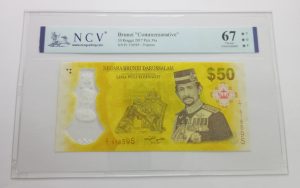 How do you see the market and where is it heading to?
How do you see the market and where is it heading to?
The market is focusing on the high preservation bill that can be certified. More and more manipulated banknotes are being rejected. Of course, purchases are made on the Internet and at reputable auction houses. Personally, I do not usually buy my bills already certified; there is generally too much speculation around the bill, so I prefer to see them in hand and then certify them on my own. Honestly, I do not see a prosperous future in Spanish banknote collecting.
Prices have suffered big increases in the last few years; why do you think this is, and do you consider that we are in a numismatic bubble?
When I started in 2002, with the disappearance of the peseta and the economic welfare, prices skyrocketed, and every year, they rose an average of 15 or 20%. Then, with the crisis, prices plummeted, and although everything has stabilized a bit, banknotes are still expensive. Supply and demand will determine prices, as usual.
What is the rarest piece you have seen?
In the famous Cayón auction in 2005, with hardly any knowledge, I had the chance to see in the offices of Orfila Street the classic 1000 pesetas of Murillo (1880), Cervantes (1884) or the 500 of Goya (1874) among others. In my collection, I have a few interesting pieces, but no big deal, the two of 1000 and 500 pesetas from 1907, and as for the test notes, I have some really rare things but, due to the low demand, it does not arouse great interest so I enjoy them by myself.
____
RAMÓN COBOS
Only a cataclysm could disrupt the Notaphily market.
You have been collecting banknotes since 1977 and, in addition, you are the author of more than 100 articles and two books on Spanish banknotes: Obligaciones, vales y documentos puestos en circulación como papel moneda en España (Bonds, vouchers and documents put into circulation as paper money in Spain) and Papel moneda emitido por organismos estatales, entidades locales, empresas y sindicatos durante la Guerra Civil en el Norte de España (Paper money issued by state agencies, local entities, companies, and trade unions during the Civil War in Northern Spain).
How did you start collecting stamps?
I started collecting stamps in 1952 and stopped when I realized the dealers and the Post Office were taking me for a ride with the new issues. In 1977, I was given five 25-peseta Albéniz banknotes. I liked them so much that I started looking for banknotes in the philately where I used to buy stamps and I was encouraged to buy some more peseta and until today.
What is your forte?
I consider myself a specialist in paper money illegally issued during the 19th and early 20th century, credit societies, Balearic banks, etc., and in the issues of Northern Spain during the Civil War. I collect 20th-century Spanish bills and the aforementioned Spanish paper money —I would say I have one of the best collections on that subject.
What would you do differently if you were to start over?
The one mistake I would not make, and I did make at some point, is trusting dealers. I would say that 95% of them lack sufficient knowledge and prioritize the business side over anything else. My recommendation for new collectors is to study and acquire some reference books.
What do you think of the rising prices in this market?
The notaphily market is like any other: supply and demand with its ups and downs. Between 2005 and 2010, banknotes were much more expensive than they are today; then, they dropped sharply, and now they are going up again. Believing that there will be stability is not knowing the power of the market. Only a cataclysm like the one that occurred in philately due to the Afinsa scandal could disrupt the market for banknotes. If someone collects thinking about whether the specimens are expensive or cheap or if they do it for sheer investment, they need clarification. Collecting should be regarded as entertainment and, as such, should only be based on one’s own availabilities.
no less.
What are the most exceptional pieces you have or have seen?
I was friends with Zacarías Mateos and Félix Cuquerella, and I saw their collections and stock, respectively. In paper money of credit institutions, Balearic Islands, and private banks, I have quite a few fascinating specimens. From the 20th century, I have scarce pieces, perhaps the 500 pesetas from 1903 would catch the eye of a beginner collector.
____
JUAN FRANCISCO HUERTA
We might be creating a bubble in the market.
He has been collecting Spanish bills since before the Euro came out. It all started when he kept banknotes for souvenirs, and nowadays he has a nice certified collection.
You are a specialist in Spanish banknotes; what periods do you collect?
Alfonso XII, Alfonso XIII, Republic, Provinces, Spanish State, Juan Carlos and Euros.
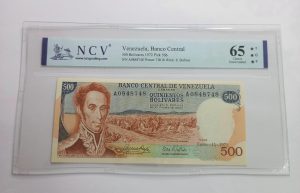 What mistakes would you never make again? Any advice for beginners?
What mistakes would you never make again? Any advice for beginners?
Buying compulsively without looking at qualities and collecting correlative pairs. As for the beginners, I would tell them to prioritize quality over quantity and to take advantage of every situation without rushing.
Where do you think the market is heading?
Towards uncirculated bills and certification; the high grades that people are paying more and more for. We might be creating a bubble, but I don’t think we are in one.
Prices have indeed risen a lot in recent years. Why do you think that is?
It’s due to the manipulated banknotes and the fact that there are fewer and fewer good banknotes and more demanding collectors.
Finally, a piece that you remember as exceptional?
The rarest piece I have been unable to get is the 5000 pesetas from 1938. Because of its price, I have not been able to get it yet. I don’t have a favorite piece, and within my collection, I have a preference for the Alfonso XIII period.
___
MIGUEL ARIAS TORRES
Coins and bills certificaton will become essential.
Miguel is an Economist, Tax Advisor, and Auditor, and the seed of his passion for numismatics was planted by a starter set of euro bills that in December 2001 was delivered by banks to companies. Three years later, this Asturian was fully involved in collecting.
Where did you decide to start collecting?
I focused those first years on the Spanish coins of Juan Carlos I and the first euro series of all countries. In 2004, with the number of variants of euro coins that began to come out and the difficulty of keeping them in good condition (because the copper and alloys of euro coins soon showed green or black spots, especially living in northern Spain), I got discouraged with coins and changed the direction of my collection. I started with world banknotes, which are easier for me to preserve and enjoy.
What do you specialize in?
Actually, I don’t consider myself a specialist but rather an amateur. I focus my collection on world banknotes in the best possible condition and with special affection for polymer banknotes because they are easier to find and in good condition.
Do you remember your beginnings?
They go back to the Afinsa Forum, where I started collecting, collaborating, and organizing group purchases of the first series of euro coins from all over Europe. I managed purchases for a group of more than 50 collectors and was in charge of centralizing the group purchase of coins. Still, soon after, when we were invited to leave that forum and the scandal of that company erupted, we moved all our operations to anversoyreverso.com —currently reversoyanverso.com. As my interest in bills changed, I organized group purchases for almost a hundred collectors, and that is how the central part of my worldwide banknote collection started. Indeed, they were affordable banknotes, at prices that today would be ridiculous, and in SC qualities. They were very accessible pieces, very cheap and in SC quality. Taxes were ridiculous or inexistent.
Throughout these years, do you spot mistakes you would not make today?
Yes, a lot, especially intending to have at least one banknote from each existing or extinct country. It was the main mistake and frustration of my collection since it is an almost impossible task as there are no bills from all countries or some of them at unattainable prices due to their denomination or because they stopped issuing them many years ago.
An advice for beginners…
Plan the collection and set reasonable goals and deadlines, because trying to cover a lot and fast is only to pile up objects. Collecting is a task that involves organization, classification, training, and learning, without rushing to achieve a challenge to move on to the next one.
How do you think the market is evolving, and where are we heading?
Although some of us already saw the importance of banknotes or coins certification, I believe it will be imposed for pieces of medium, high, and very high value, making it essential. If we add that today many countries are planning and studying not only to move to plastic banknotes —polymers— but in many cases —and not many years from now— to eliminate physical money, both coins and paper, future collectors will have fewer new issues and more commemorative uncirculated specimens.
Surely, the market will turn to non-contemporary banknotes, and we will go back to looking for banknotes that will become classics because they won’t be replaced, and contemporary —future— banknotes will disappear. The combination of certification and the disappearance or substantial reduction of physical money will be a challenge for collectors that is difficult to foresee. However, we hope it will take several decades before physical money is replaced by intangible money.
Prices have rocketed lately. In your opinion, what is causing it?
It is the evolution of the market itself, but no market goes up forever. Several causes have added up: the lack of profitability of other investments and the search for new forms of investment and, why not say it, sometimes collecting is not very rational, and the price, if the pocket is deep enough, is not a brake since in our irrationality we need to cover that gap in our albums or at least try to do so.
We have all suffered favorable and unfavorable evolutions of numismatics or the numismatic market, and it depends on whether you see your collection as an investment or a hobby. Therefore, you have to know what is the right time to buy, wait, or sell.
Are we facing a bubble?
I don’t think it is a bubble, but rather a step that will come to a halt sooner or later, but it is more a wish than a reality since the proliferation of auctions tends to increase prices rather than stabilize them. The system itself increases costs with bilateral commissions to buyer and seller, the need for certification, shipping, and insurance, which means that good pieces must be sold at prices that cover the investment and the costs of the sale.
What is the most exceptional thing you have in your collection?
My collection does not have great rarity since it has not focused on classic banknotes. Since they are contemporary international bills, few pieces can be considered rare or impossible. We could say that the most extraordinary or biggest outlay of my collection is:
Maldives 5000 Rufiyaa 2015 Pick 25a in portfolio.
Greenland 25 Ore 1913 Pick 11b 2 uncut units UNCUT SC-
Faeroe Islands 200 Krone 2011 Pick 31a PMG 70EPQ
And in addition, the first plates of each Euro Spain banknote signature.
__
JAIME SANZ
The good thing about Notaphily is there are no investors, only collectors
He became passionate about banknotes while living in New York where he found in the fleamarkets interesting pieces from extinct countries such as British Borneo, Biafraor Katanga. Furthermore, as an economist and banker, he soon was interested in hyper-inflated South American banknotes.
What can you tell us about your personal collection?
Till a few years ago I’ve been a banknote generalist, collecting pieces from all around the world. Later on, in a way as a consequence of price increases, I became more specialized in the areas I was especially interested: Africa, Central America and local Spanish Civil War banknotes.
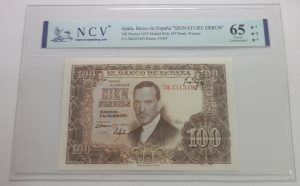
Do you consider that over the years, you have made many mistakes, and how would you help those who are just starting to avoid them?
Initially, one makes many mistakes, but I am okay with them because they always teach you something. Buying some counterfeit bills, for example, but also selling some bills too quickly. Impatience is often mentioned as a rookie mistake, but that’s not so obvious to me. I have more regrets about being patient and passing up bills that I never saw again than about buying some things without thinking it twice. What I recommend to those who are starting is to study a lot, get a lot of catalogs and references, make good, knowledgeable friends, and try to buy the best possible quality.
How do you see the future of the notaphily market?
As far as I am concerned, the hobby is clearly evolving towards quality and rarity. Rare and high-quality specimens are valued more and more every year. Both when I buy and when I sell at international fairs or auctions, what we are all looking for are rare and high-grade banknotes. In my experience, it is more difficult to buy —and much easier to sell— a €1000 than a €200 bill. In a market where rarity and quality come first, it is clear who the big winners are: the auction houses and the grading houses.
Considering the price rise, do you think we are heading towards a bubble?
Prices have gone up a lot, but I don’t think we are in a bubble. In my opinion, notaphily has two big differences concerning numismatics and other major collecting areas: first, prices for ultra-rare pieces are still low. There are very few collecting areas where you can acquire pieces of which only 5-10 specimens are known for a few thousand euros. And secondly, there are no investors in note collecting. Every time prices go up in any auction, there are people making a big fuss because investors are behind it. That doesn’t apply here. In notaphily, we are basically all collectors.
Do you have any rare pieces in your collection?
I have seen very rare pieces, and fortunately, I have been able to add to my collection some of them, especially from Africa. Bills that were thought to have disappeared from East Africa in the 1920s, banknotes from Zanzibar, or from the Portuguese colonies in Africa in the 19th century. In Spain, I could have some very rare classics or pieces like the Dama de Elche (Lady of Elche) or the Fortuny. I also have dozens of proofs or unique models of banknotes, especially from Africa, which are a great weakness of mine.

